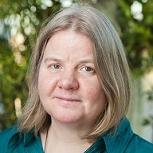Understanding the Complexity of Coastal and Inland Waters using Remote Sensing
A special issue of Remote Sensing (ISSN 2072-4292). This special issue belongs to the section "Remote Sensing in Geology, Geomorphology and Hydrology".
Deadline for manuscript submissions: closed (31 October 2019) | Viewed by 52179
Special Issue Editors
Interests: marine ecology; bio-optical oceanography; marine remote sensing
Special Issues, Collections and Topics in MDPI journals
Interests: atmospheric correction; downstream applications; multi-sensor synergies
Special Issue Information
Dear Colleagues,
The Copernicus missions, commissioned by ESA up until 2030, and several of the instruments relevant for aquatic remote sensing are already in space. Amongst this suite of instruments are those with the spatial resolution and dynamic range necessary for imaging coastal and inland waters. These waters are particularly vulnerable to anthropogenic influence, play host to numerous, dynamic biogeochemical processes, and support economically vital activities such as the fisheries, tourism and recreation. However, these waters tend to be optically complex, meaning that, for a variety of reasons, retrieval of quantitative metrics of water quality and productivity from remote sensing is often challenging. In this Special Issue, we consider the optical properties of a variety of different types of coastal and inland waters—some dominated by CDOM absorption and others dominated by scatter from inorganic particles.
We encourage submissions focusing on ocean color applications in coastal and inland waters, including, but not limited to:
- The measurement of inherent optical properties (IOPs)
- Ocean color algorithm development, validation and calibration in optically-complex waters
- Remote sensing of algal blooms, and their driving factors
- Ocean colour remote sensing for management applications
- The use of ocean color data to observe phytoplankton phenology and possible regime shifts in coastal and freshwater ecosystems
Dr. Samantha Lavender
Dr. Susanne Craig
Guest Editors
Manuscript Submission Information
Manuscripts should be submitted online at www.mdpi.com by registering and logging in to this website. Once you are registered, click here to go to the submission form. Manuscripts can be submitted until the deadline. All submissions that pass pre-check are peer-reviewed. Accepted papers will be published continuously in the journal (as soon as accepted) and will be listed together on the special issue website. Research articles, review articles as well as short communications are invited. For planned papers, a title and short abstract (about 100 words) can be sent to the Editorial Office for announcement on this website.
Submitted manuscripts should not have been published previously, nor be under consideration for publication elsewhere (except conference proceedings papers). All manuscripts are thoroughly refereed through a single-blind peer-review process. A guide for authors and other relevant information for submission of manuscripts is available on the Instructions for Authors page. Remote Sensing is an international peer-reviewed open access semimonthly journal published by MDPI.
Please visit the Instructions for Authors page before submitting a manuscript. The Article Processing Charge (APC) for publication in this open access journal is 2700 CHF (Swiss Francs). Submitted papers should be well formatted and use good English. Authors may use MDPI's English editing service prior to publication or during author revisions.
Keywords
- Inherent optical properties
- Copernicus missions (S1, S2 & S3)
- Management of coastal and inland waters
- Time series analysis
- Phytoplankton phenology and ecology
- Climate change







